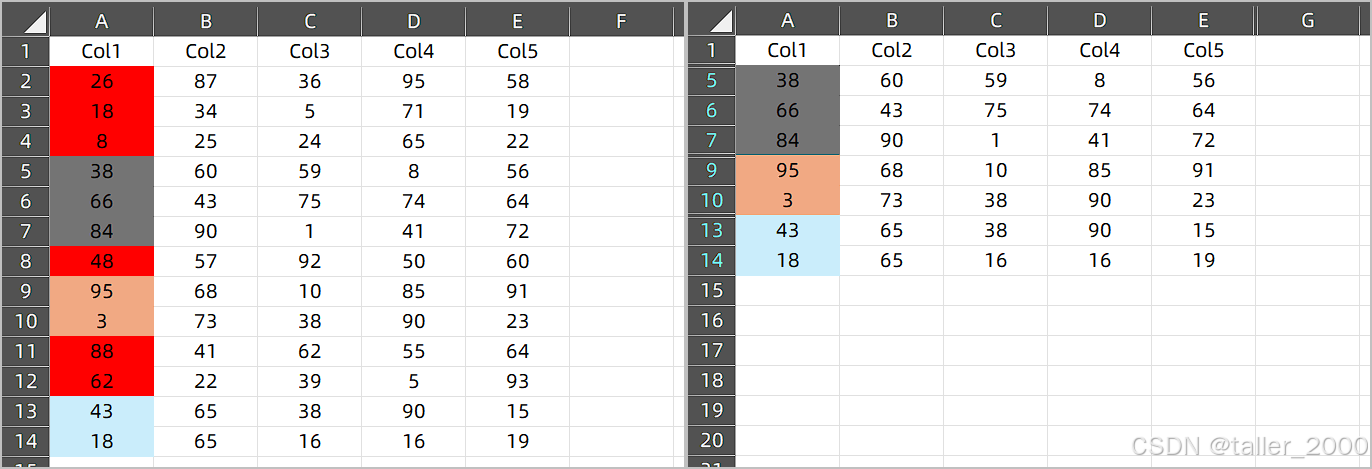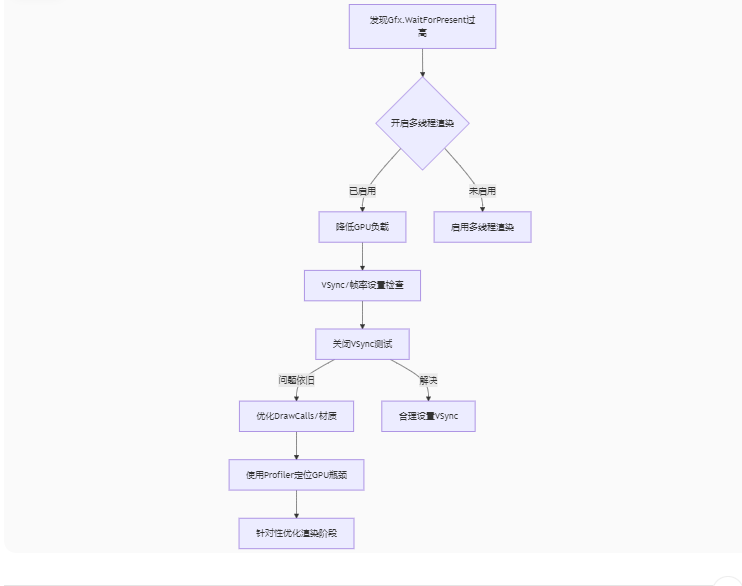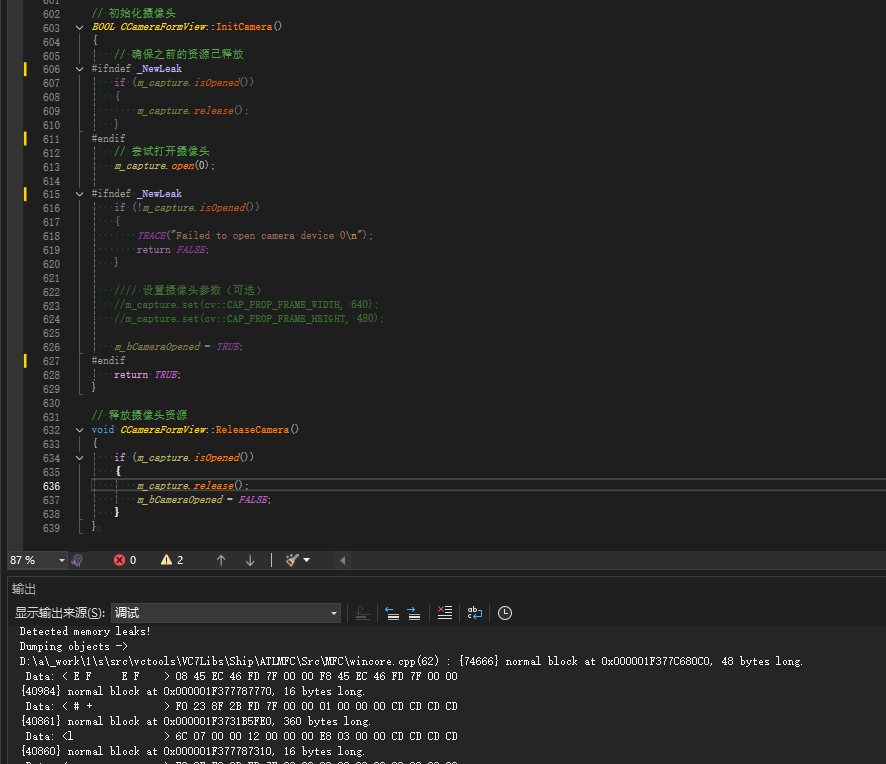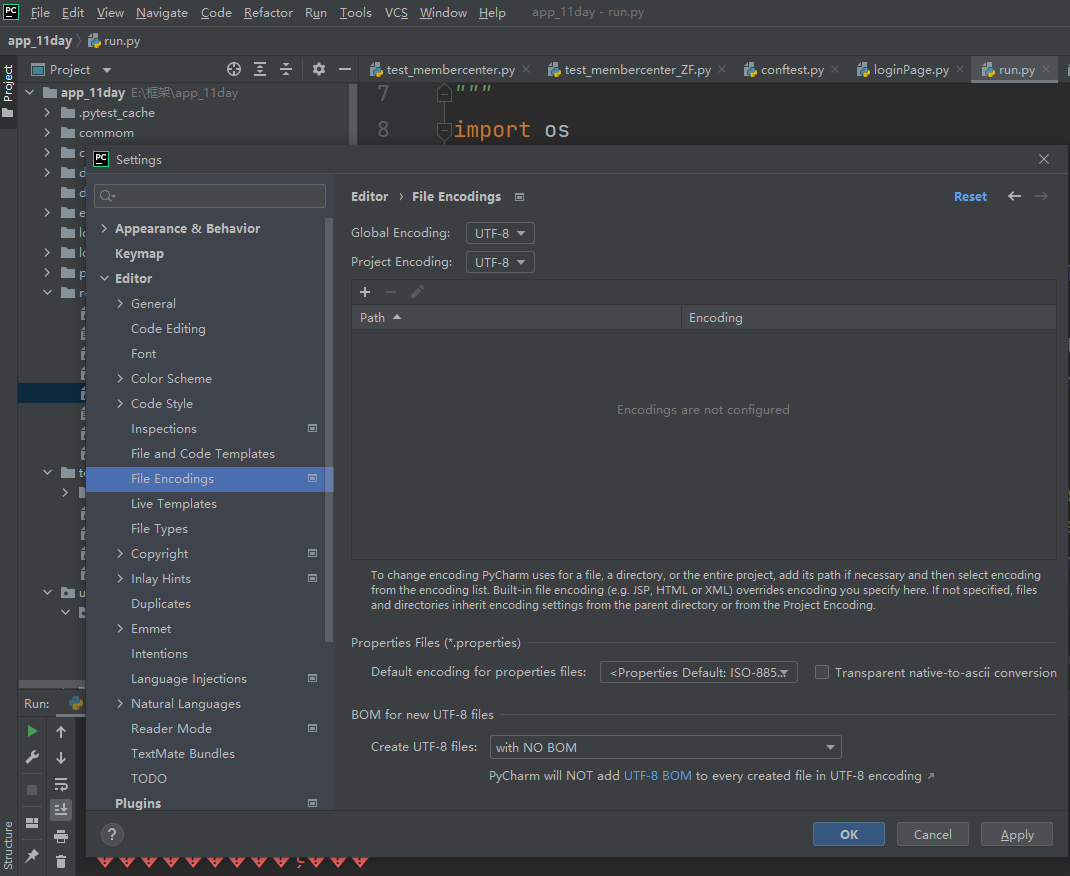Android的SQLiteOpenHelper类 笔记241027
SQLiteOpenHelper
SQLiteOpenHelper是Android开发中用于管理SQLite数据库的一个非常重要的工具类。以下是对SQLiteOpenHelper的详细介绍:
一、基本概念
SQLiteOpenHelper是一个抽象类,它主要用于管理数据库的创建和版本管理。通过继承这个类,开发者可以重写一些方法以实现数据库的创建、升级和降级等功能。
二、主要方法
- 构造方法:用于创建SQLiteOpenHelper对象,需要传入数据库名称、版本号和一个可选的CursorFactory对象。
public SQLiteOpenHelper(@Nullable Context context, @Nullable String name, @Nullable SQLiteDatabase.CursorFactory factory, int version)
public SQLiteOpenHelper(@Nullable Context context, @Nullable String name, @Nullable SQLiteDatabase.CursorFactory factory, int version, @Nullable DatabaseErrorHandler errorHandler)
public SQLiteOpenHelper(@Nullable Context context, @Nullable String name, int version, @NonNull SQLiteDatabase.OpenParams openParams) - onCreate(SQLiteDatabase db):在数据库第一次创建时调用,用于执行创建表和初始化数据等操作。
- onUpgrade(SQLiteDatabase db, int oldVersion, int newVersion):在数据库版本升级时调用,用于执行表结构的修改、数据迁移等操作。
- onDowngrade(SQLiteDatabase db, int oldVersion, int newVersion):在数据库版本降级时调用,但这个方法不是必须的,因为在实际开发中降级操作并不常见。
- getReadableDatabase():获取一个可读的数据库对象。如果数据库不存在,则会先调用onCreate()方法创建数据库。
- getWritableDatabase():获取一个可写的数据库对象。如果数据库不存在,也会先调用onCreate()方法创建数据库。
SQLiteOpenHelper的主要方法
| 方法名 | 作用 | 备注 |
|---|---|---|
| SQLiteOpenHelper( 构造方法三个 | 创建SQLiteOpenHelper实例 | 一般用 new SQLiteOpenHelper(Context context, String databaseName, CursorFactory factory, int version) 参数1可填MianActivity的实例,如this或MainActivity.this 参数2是数据库名称,如果不存在就会调用 onCreate()方法参数3指定CursorFactory , 可以为null(使用默认的CursorFactory) 参数4是版本号,如果变动就会执行 onUpgrade()方法 |
| 抽象方法 | 创建数据库时做什么, | 没有对应的数据库时才调用 |
| 抽象方法 | 升级数据库版本时做什么 | 构造方法参数的版本号上升时才调用 |
| 非抽象,可选 onDowngrade() | 降级数据库版本时做什么 | 构造方法参数的版本号下降时才调用 |
| 非抽象,可选 onOpen() | 打开数据库时做什么 | |
| close() | 关闭所有打开的数据库对象 | |
| getWritableDatabase() | 创建或打开可以读/写的数据库 | 通过返回的SQLiteDatabase对象对数据库进行操作 |
| getReadableDatabase() | 创建或打开可读的数据库 | 同上 |
SQLiteDatabase的主要方法
| 方法名 | 作用 | 备注 |
|---|---|---|
| execSQL() | 可进行增删改操作, 不能进行查询操作 | |
| query()、rawQuery() | 查询数据库 | |
| insert() | 插入数据 | |
| delete() | 删除数据 | |
SQLiteOpenHelper的构造方法
SQLiteOpenHelper 的构造方法通常看起来像这样(基于 Android SDK 的源代码):
public SQLiteOpenHelper(Context context, String name, CursorFactory factory, int version, DatabaseErrorHandler errorHandler) {// 验证版本号是否有效if (version < 1) {throw new IllegalArgumentException("Version must be >= 1, was " + version);}// 保存传入的参数mContext = context;mName = name;mFactory = factory;mNewVersion = version;mErrorHandler = errorHandler;
}// 还有一个更简单的构造方法,它不接受 DatabaseErrorHandler
public SQLiteOpenHelper(Context context, String name, CursorFactory factory, int version) {this(context, name, factory, version, null);
}
在上面的构造方法中:
context是一个Context对象,它允许访问应用的资源和类,以及调用应用级操作,如启动活动、广播和接收意图等。name是数据库文件的名称。如果不包括路径,则数据库文件将被存储在应用的私有文件目录中。factory是一个用于创建游标对象的CursorFactory。如果传入null,则使用默认的游标工厂。version是数据库的版本号。这是一个整数,用于跟踪数据库的结构变化。当版本号增加时,onUpgrade方法将被调用。errorHandler是一个DatabaseErrorHandler对象,它允许在数据库遇到错误时执行自定义的错误处理逻辑。如果传入null,则使用默认的错误处理器。
在创建 SQLiteOpenHelper 的子类时,我们需要调用其中一个构造方法来初始化父类。然后,我们可以实现 onCreate、onUpgrade 等方法来定义数据库的结构和升级逻辑。
例如:
public class MyDatabaseHelper extends SQLiteOpenHelper {private static final String DATABASE_NAME = "mydatabase.db";private static final int DATABASE_VERSION = 1;public MyDatabaseHelper(Context context) {super(context, DATABASE_NAME, null, DATABASE_VERSION);}@Overridepublic void onCreate(SQLiteDatabase db) {// 创建表的 SQL 语句String CREATE_TABLE = "CREATE TABLE mytable (" +"id INTEGER PRIMARY KEY AUTOINCREMENT," +"name TEXT" +");";db.execSQL(CREATE_TABLE);}@Overridepublic void onUpgrade(SQLiteDatabase db, int oldVersion, int newVersion) {// 版本升级时的逻辑db.execSQL("DROP TABLE IF EXISTS mytable");onCreate(db);}
}
在这个例子中,我们创建了一个名为 MyDatabaseHelper 的类,它继承自 SQLiteOpenHelper。我们在构造方法中调用了父类的构造方法,并传入了数据库名称、版本号和上下文对象。然后,我们实现了 onCreate 和 onUpgrade 方法来定义数据库的结构和升级逻辑。
三、 SQLiteOpenHelper源代码
以下是一个简化的 SQLiteOpenHelper 源代码示例,并附有关键部分的解释:
package android.database.sqlite;import android.content.Context;
import android.database.DatabaseErrorHandler;
import android.database.sqlite.SQLiteDatabase;
import android.database.sqlite.SQLiteDatabase.CursorFactory;
import android.util.Log;public abstract class SQLiteOpenHelper {// 调试标志,用于确定是否严格只读private static final boolean DEBUG_STRICT_READONLY = false;// 上下文对象,用于访问应用的资源和类private final Context mContext;// 数据库文件名private final String mName;// 用于创建游标对象的工厂,如果为 null,则使用默认工厂private final CursorFactory mFactory;// 数据库版本号private final int mNewVersion;// 数据库错误处理器,如果为 null,则使用默认处理器private final DatabaseErrorHandler mErrorHandler;// 数据库对象,可能为 nullprivate SQLiteDatabase mDatabase;// 标记数据库是否正在初始化private boolean mIsInitializing;// SQLiteOpenHelper 的构造函数public SQLiteOpenHelper(Context context, String name, CursorFactory factory, int version, DatabaseErrorHandler errorHandler) {if (version < 1) throw new IllegalArgumentException("Version must be >= 1, was " + version);mContext = context;mName = name;mFactory = factory;mNewVersion = version;mErrorHandler = errorHandler;}// 简化构造函数,不指定错误处理器public SQLiteOpenHelper(Context context, String name, CursorFactory factory, int version) {this(context, name, factory, version, null);}// 创建或打开一个数据库,用于读写。如果数据库磁盘空间已满,则尝试以只读方式打开public synchronized SQLiteDatabase getWritableDatabase() {// ...(实现细节省略)}// 创建或打开一个数据库,用于读取。如果数据库磁盘空间已满,则只能以只读方式打开public synchronized SQLiteDatabase getReadableDatabase() {// ...(实现细节省略)}// 当数据库第一次创建时调用此方法public abstract void onCreate(SQLiteDatabase db);// 当数据库版本升级时调用此方法public abstract void onUpgrade(SQLiteDatabase db, int oldVersion, int newVersion);// 当数据库版本降级时调用此方法(可选实现)public void onDowngrade(SQLiteDatabase db, int oldVersion, int newVersion) {throw new SQLiteException("Can't downgrade database from version " + oldVersion + " to " + newVersion);}// 当数据库打开时调用此方法(可选实现)public void onOpen(SQLiteDatabase db) {}// ...(其他方法和内部类省略)
}
关键部分解释:
- 构造函数:
SQLiteOpenHelper提供了两个构造函数,允许开发者指定数据库名称、版本号、游标工厂和错误处理器。版本号必须大于等于 1。 - getWritableDatabase():此方法用于创建或打开一个数据库,用于读写操作。如果数据库磁盘空间已满,则尝试以只读方式打开,但会抛出异常。
- getReadableDatabase():此方法用于创建或打开一个数据库,用于读取操作。如果数据库磁盘空间已满,则只能以只读方式打开。
- onCreate(SQLiteDatabase db):这是一个抽象方法,当数据库第一次创建时调用。开发者应在此方法中编写创建表和初始化数据的 SQL 语句。
- onUpgrade(SQLiteDatabase db, int oldVersion, int newVersion):这也是一个抽象方法,当数据库版本升级时调用。开发者应在此方法中编写升级数据库的 SQL 语句,如添加新列、修改表结构等。
- onDowngrade(SQLiteDatabase db, int oldVersion, int newVersion):这是一个可选实现的方法,当数据库版本降级时调用。默认情况下,此方法会抛出异常,因为降级操作通常不被推荐。
- onOpen(SQLiteDatabase db):这是一个可选实现的方法,当数据库打开时调用。开发者可以在此方法中执行一些初始化操作。
请注意,上述代码是一个简化的示例,并省略了部分实现细节和内部类。在实际开发中,SQLiteOpenHelper 的实现可能会更加复杂,具体取决于应用的需求和数据库的结构。
用法实例
一个用 匿名内部类实例化SQLiteOpenHelper的Activity
package com.example.emptyviewsactivity2410261826;import android.annotation.SuppressLint;
import android.content.ClipData;
import android.content.ClipboardManager;
import android.content.ContentValues;
import android.database.Cursor;
import android.database.sqlite.SQLiteDatabase;
import android.database.sqlite.SQLiteOpenHelper;
import android.os.Bundle;
import android.util.Log;
import android.widget.Button;
import android.widget.EditText;
import android.widget.LinearLayout;
import android.widget.TableLayout;
import android.widget.TableRow;
import android.widget.TextView;import androidx.activity.EdgeToEdge;
import androidx.appcompat.app.AppCompatActivity;
import androidx.appcompat.widget.AppCompatEditText;
import androidx.core.graphics.Insets;
import androidx.core.view.ViewCompat;
import androidx.core.view.WindowInsetsCompat;public class MainActivity extends AppCompatActivity {final String DbName = "note1", TbName = "tableA1" , Col0="id" , Col1="content";final int RowQuantity = 666;LinearLayout linearLayout = null;TableLayout tableLayout = null;final TableRow[] TableRows = new TableRow[RowQuantity];final TextView[] TvAr = new TextView[RowQuantity];final EditText[] EtAr = new EditText[RowQuantity];
// final AppCompatEditText EtAr[] = new AppCompatEditText[RowQuantity];final Button[] CopyBtnAr = new Button[RowQuantity];final Button[] PasteBtnAr = new Button[RowQuantity];final Button[] CutBtnAr = new Button[RowQuantity];final Button[] DelBtnAr = new Button[RowQuantity];SQLiteOpenHelper sqliteOpenHelper;SQLiteDatabase sqliteDatabase;@SuppressLint("MissingInflatedId")@Overrideprotected void onCreate(Bundle savedInstanceState) {super.onCreate(savedInstanceState); Log.i("onCreate()","onCreate()");EdgeToEdge.enable(this);setContentView(R.layout.activity_main);ViewCompat.setOnApplyWindowInsetsListener(findViewById(R.id.main), (v, insets) -> {Insets systemBars = insets.getInsets(WindowInsetsCompat.Type.systemBars());v.setPadding(systemBars.left, systemBars.top, systemBars.right, systemBars.bottom);return insets;});/// 👆上面部分是新建项目自动生成的linearLayout = findViewById(R.id.LinearLayoutA1);tableLayout = findViewById(R.id.tableLayoutA1);// EditText editText = new EditText(this); linearLayout.addView(editText);
//
// AppCompatEditText appCompatEditText = new AppCompatEditText(MainActivity.this); linearLayout.addView(appCompatEditText);
//
// AutoCompleteTextView autoCompleteTextView = new AutoCompleteTextView(this); linearLayout.addView(autoCompleteTextView);
//
// MultiAutoCompleteTextView multiAutoCompleteTextView = new MultiAutoCompleteTextView(MainActivity.this); linearLayout.addView(multiAutoCompleteTextView);/*删除数据库deleteDatabase(DbName)删除数据库, Activity,AppCompatActivity都自带删除Sqlite数据库的方法, 这是实现自最顶层 public abstract class Context 的抽象方法 public abstract boolean deleteDatabase(String name);AppCompatActivity extends FragmentActivity extends ComponentActivity extends androidx.core.app.ComponentActivity extends Activity extends ContextThemeWrapper extends ContextWrapper extends Context*/
// deleteDatabase(DbName);/*通过匿名内部类实现SQLiteOpenHelper, 也可用继承类实现.实例化SQLiteOpenHelper时虽然指定了数据库名称和版本,但还不会创建或打开数据库,直到实例执行 getReadableDatabase() 或 getWritableDatabase() 获取数据库时时,才会打开 或 创建再打开 数据库*/sqliteOpenHelper = new SQLiteOpenHelper(MainActivity.this, DbName, null, 1) {//必须//onCreate(SQLiteDatabase sqLiteDatabase数据库实例)///在执行 getReadableDatabase() 或 getWritableDatabase() 获取数据库时时, 如果数据库名称对应的数据库不存在,就会调用该方法,该方法为abstract抽象方法,必须实现.@Overridepublic void onCreate(SQLiteDatabase sqLiteDatabase) {System.out.println("SQLiteOpenHelper 的 onCreate(SQLiteDatabase sqLiteDatabase)被调用 //在执行 getReadableDatabase() 或 getWritableDatabase() 获取数据库时时, 如果数据库名称对应的数据库不存在,就会调用该方法,该方法为abstract抽象方法,必须实现");final String CreateTableSql = "CREATE TABLE "+TbName+" ( id INTEGER PRIMARY KEY , content TEXT )";sqLiteDatabase.execSQL(CreateTableSql);for(int r=0; r<RowQuantity; r++){ContentValues cvs = new ContentValues(2);cvs.put(Col0, r);cvs.put(Col1, "");sqLiteDatabase.insert(TbName, null, cvs);}}//必须//onUpgrade(SQLiteDatabase sqLiteDatabase数据库实例, int oldVersion旧版本号, int newVersion新版本号)///在执行 getReadableDatabase() 或 getWritableDatabase() 获取数据库时时, 如果数据库版本号升高,就会调用该方法,该方法为abstract抽象方法,必须实现. 在创建数据库时不会调用该方法@Overridepublic void onUpgrade(SQLiteDatabase sqLiteDatabase, int oldVersion, int newVersion) {System.out.println("SQLiteOpenHelper 的 onUpgrade(SQLiteDatabase sqLiteDatabase, int oldVersion, int newVersion)被调用 //在执行 getReadableDatabase() 或 getWritableDatabase() 获取数据库时时, 如果数据库版本号升高,就会调用该方法,该方法为abstract抽象方法,必须实现. 在创建数据库时不会调用该方法");}//非抽象,可选//onDowngrade(SQLiteDatabase sqLiteDatabase数据库实例, int oldVersion旧版本号, int newVersion新版本号)///在执行 getReadableDatabase() 或 getWritableDatabase() 获取数据库时时, 如果数据库版本号发生变动,就会调用该方法,该方法非抽象,可选. 在创建数据库时不会调用该方法@Overridepublic void onDowngrade(SQLiteDatabase sqLiteDatabase, int oldVersion, int newVersion) {System.out.println("SQLiteOpenHelper 的 onDowngrade(SQLiteDatabase sqLiteDatabase, int oldVersion, int newVersion)被调用 //在执行 getReadableDatabase() 或 getWritableDatabase() 获取数据库时时, 如果数据库版本号降低,就会调用该方法,该方法非抽象,可选. 在创建数据库时不会调用该方法");}//非抽象,可选//onOpen(SQLiteDatabase sqLiteDatabase数据库实例)//在执行 getReadableDatabase() 或 getWritableDatabase() 获取数据库时时, 被调用@Overridepublic void onOpen(SQLiteDatabase sqLiteDatabase) {Log.i("onOpen(SQLiteDatabase sqLiteDatabase)","SQLiteOpenHelper 的 onOpen(SQLiteDatabase sqLiteDatabase)被调用 //在执行 getReadableDatabase() 或 getWritableDatabase() 获取数据库时时, 会调用onOpen(SQLiteDatabase db)方法");@SuppressLint("Recycle") Cursor cursor = sqLiteDatabase.rawQuery("SELECT COUNT(*) FROM "+TbName, null);cursor.moveToFirst(); if(cursor.getInt(0) != RowQuantity){ Log.i("库表均已存在,但行数不对应","库表均已存在,但行数不对应, 将 DELETE TABLE FROM table-name 然后重新 INSERT INTO");sqLiteDatabase.delete(TbName,null,null);for(int r=0; r<RowQuantity; r++){sqLiteDatabase.execSQL("INSERT INTO " + TbName + " VALUES (?,?) " , new Object[]{r,""});}}}};sqliteDatabase = sqliteOpenHelper.getWritableDatabase();@SuppressLint("Recycle") Cursor cursor = sqliteDatabase.rawQuery("SELECT * FROM "+TbName, null);for(int r=0; cursor.moveToNext(); r++){TableRow row = TableRows[r] = new TableRow(this); tableLayout.addView(row);TextView tv = TvAr[r] = new TextView(this); row.addView(tv); tv.setText(cursor.getString(0));EditText et = EtAr[r] = new EditText(this); row.addView(et); et.setText(cursor.getString(1));Button copyBtn = CopyBtnAr[r] = new Button(this); row.addView(copyBtn, 100, 100); copyBtn.setText("复");copyBtn.setOnClickListener((view)->{ClipboardManager clipboardManager = (ClipboardManager)getSystemService(CLIPBOARD_SERVICE);ClipData clipData = ClipData.newPlainText("text", et.getEditableText().toString());clipboardManager.setPrimaryClip(clipData);});Button pBtn = PasteBtnAr[r] = new Button(this); row.addView(pBtn, 100, 100); pBtn.setText("粘"); pBtn.setOnClickListener((view)->{ et.setText(((ClipboardManager)getSystemService(CLIPBOARD_SERVICE)).getPrimaryClip().getItemAt(0).getText()); });Button cutBtn = CutBtnAr[r] = new Button(this); row.addView(cutBtn, 100, 100); cutBtn.setText("剪"); cutBtn.setOnClickListener((view)->{copyBtn.callOnClick(); et.setText("");});Button dBtn = DelBtnAr[r] = new Button(this); row.addView(dBtn, 100, 100); dBtn.setText("删"); dBtn.setOnClickListener((view)->{ et.setText(""); });}// for(int r=0; r<RowQuantity; r++){
// TableRow row = tableRows[r] = new TableRow(this); tableLayout.addView(row);
// EditText et = etAr[r] = new EditText(this); row.addView(et);
//
// }/*测试多次调用 getReadableDatabase() 和 getWritableDatabase() 获取SQLiteDatabase数据库实例多次调用 getReadableDatabase() 和 getWritableDatabase() 返回同一个SQLiteDatabase实例*/SQLiteDatabase dbw , dbr;dbr = sqliteOpenHelper.getReadableDatabase();Log.i("dbw.isReadOnly()",""+dbr.isReadOnly());dbw = sqliteOpenHelper.getWritableDatabase();Log.i("dbw.isReadOnly()",""+dbw.isReadOnly());
// dbr = sqliteOpenHelper.getReadableDatabase();System.out.println("dbw==dbr 结果 "+(dbw==dbr));Log.i("dbw.isReadOnly()",""+dbw.isReadOnly());/*删除数据库deleteDatabase(DbName)删除数据库, Activity,AppCompatActivity都自带删除Sqlite数据库的方法, 这是实现自最顶层 public abstract class Context 的抽象方法 public abstract boolean deleteDatabase(String name);AppCompatActivity extends FragmentActivity extends ComponentActivity extends androidx.core.app.ComponentActivity extends Activity extends ContextThemeWrapper extends ContextWrapper extends Context*/
// deleteDatabase(DbName);}void save(){for(int r=0; r<RowQuantity; r++){ContentValues cvs = new ContentValues();cvs.put(Col1, EtAr[r].getText().toString());sqliteDatabase.update(TbName, cvs, "id=?", new String[]{""+r});}}@Overrideprotected void onStart() {super.onStart(); Log.i("onStart()","onStart()");}@Overrideprotected void onPause() {super.onPause(); Log.i(" onPause()"," onPause()");save();}@Overrideprotected void onStop() {super.onStop(); Log.i("onStop()","onStop()");save();}@Overrideprotected void onRestart() {super.onRestart(); Log.i("onRestart()","onRestart()");}@Overrideprotected void onPostResume() {super.onPostResume(); Log.i("onPostResume()","onPostResume()");}@Overrideprotected void onDestroy() {super.onDestroy(); Log.i("onDestroy()","onDestroy()");save();}}
一些用法收集参考
public class SQLiteHelper extends SQLiteOpenHelper {private SQLiteDatabase sqLiteDatabase;//调用父类 SQLiteOpenHelper 的构造函数public SQLiteHelper(Context context) {//context上下文环境(例如,一个 Activity),数据库名字,一个可选的游标工厂(通常是 Null),一个代表你正在使用的数据库模型版本的整数。super(context, DBUtils.DATABASE_NAME, null, DBUtils.DATABASE_VERSION);sqLiteDatabase = this.getWritableDatabase();}//创建数据库 只在没有数据库时执行@Overridepublic void onCreate(SQLiteDatabase db) {//execSQL() 方法适用于所有不返回结果的 SQL 语句db.execSQL("CREATE TABLE " + DBUtils.DATABASE_TABLE + "(" + DBUtils.NOTE_ID +" INTEGER PRIMARY KEY AUTOINCREMENT," + DBUtils.NOTE_CONTENT +" TEXT," + DBUtils.NOTE_TIME + " TEXT)");}//把一个数据库从旧的模型转变到新的模型。//它需要三个参数,一个 SQLiteDatabase 对象,一个旧的版本号和一个新的版本号@Overridepublic void onUpgrade(SQLiteDatabase db, int oldVersion, int newVersion) {}//添加数据public boolean insertData(String userContent, String userTime) {//ContentValues 储存数据,只能存储基本类型的数据,不能存储对象ContentValues values = new ContentValues();values.put(DBUtils.NOTE_CONTENT, userContent);values.put(DBUtils.NOTE_TIME, userTime);//插入数据//第一个参数是表的名称//第二个参数为空值字段,就是如果第三个参数为空(null)的时候就会用到第二个参数的值。用第二个参数代替第三个参数组拼成SQL语句//比如:insert into person(name) values(null) 这里的person字段使用了第二个参数的name//第三个参数不为空就不会用到第二个参数return sqLiteDatabase.insert(DBUtils.DATABASE_TABLE, null, values) > 0;}//删除数据public boolean deleteData(String id) {String sql = DBUtils.NOTE_ID + "=?";String[] contentValuesArrary = new String[]{String.valueOf(id)};//1表名、2字段名、3占位符的数据return sqLiteDatabase.delete(DBUtils.DATABASE_TABLE, sql, contentValuesArrary) > 0;}//修改数据public boolean updateData(String id, String content, String userYear) {ContentValues contentValues = new ContentValues();contentValues.put(DBUtils.NOTE_CONTENT, content);contentValues.put(DBUtils.NOTE_TIME, userYear);String sql = DBUtils.NOTE_ID + "=?";String[] strings = new String[]{id};//1表名、2需要更新值、3以什么条件字段更新、4条件字段的数据值(占位符的值)return sqLiteDatabase.update(DBUtils.DATABASE_TABLE, contentValues, sql, strings) > 0;}//查询数据public List<NotepadBean> qurry() {List<NotepadBean> list = new ArrayList<NotepadBean>();//1 表名、 2 需要查询的字段列表,用字符串数组形式传入,null为所有的字段、 3 以什么条件字段查询、 4 条件字段的数据值(占位符的值)、// 5 groupBy相当于select语句的groupby后面的部分、 6 having相当于select语句的having后面的部分、 7 order是我们想要的排序方式。Cursor cursor = sqLiteDatabase.query(DBUtils.DATABASE_TABLE, null, null, null,null, null, DBUtils.NOTE_ID + " desc");if (cursor != null) {while (cursor.moveToNext()) {NotepadBean noteInfo = new NotepadBean();String id = String.valueOf(cursor.getInt(cursor.getColumnIndex(DBUtils.NOTE_ID)));String content = cursor.getString(cursor.getColumnIndex(DBUtils.NOTE_CONTENT));String time = cursor.getString(cursor.getColumnIndex(DBUtils.NOTE_TIME));noteInfo.setId(id);noteInfo.setNotepadContent(content);noteInfo.setNotepadTime(time);list.add(noteInfo);}cursor.close();}return list;}
}package com.example.dbproject;
import android.content.Context;
import android.database.sqlite.SQLiteDatabase;
import android.database.sqlite.SQLiteOpenHelper;
import android.widget.Toast;
public class DbContect extends SQLiteOpenHelper {private static final int VERSION=1;private static final String DBNAME="Users.db"; // 创建数据库名叫 Usersprivate Context mContext;public DbContect(Context context){super(context,DBNAME,null,VERSION);mContext = context;}//创建数据库 只在没有数据库时执行public void onCreate(SQLiteDatabase db){//创建密码表 pwd_tbdb.execSQL("create table pwd_tb (pwd varchar(20) primary key)");//创建收入表 user_tbdb.execSQL("create table user_tb(_id integer primary key autoincrement, money decimal," +" time varchar(10),type varchar(10),handler varchar(100),mark varchar(200))");}//数据库版本更新时执行public void onUpgrade(SQLiteDatabase db,int oldVersion,int newVersion){db.execSQL("drop table if exists pwd_tb");db.execSQL("drop table if exists user_tb");onCreate(db);}}SQLiteOpenHelper是Android开发中用于管理SQLite数据库的一个非常重要的工具类。以下是对SQLiteOpenHelper的详细介绍:
一、基本概念
SQLiteOpenHelper是一个抽象类,它主要用于管理数据库的创建和版本管理。通过继承这个类,开发者可以重写一些方法以实现数据库的创建、升级和降级等功能。
二、主要方法
- 构造方法:用于创建SQLiteOpenHelper对象,需要传入数据库名称、版本号和一个可选的CursorFactory对象。
- onCreate(SQLiteDatabase db):在数据库第一次创建时调用,用于执行创建表和初始化数据等操作。
- onUpgrade(SQLiteDatabase db, int oldVersion, int newVersion):在数据库版本升级时调用,用于执行表结构的修改、数据迁移等操作。
- onDowngrade(SQLiteDatabase db, int oldVersion, int newVersion):在数据库版本降级时调用,但这个方法不是必须的,因为在实际开发中降级操作并不常见。
- getReadableDatabase():获取一个可读的数据库对象。如果数据库不存在,则会先调用onCreate()方法创建数据库。
- getWritableDatabase():获取一个可写的数据库对象。如果数据库不存在,也会先调用onCreate()方法创建数据库。
三、使用示例
以下是一个使用SQLiteOpenHelper创建数据库、表以及进行增删改查操作的简单示例:
- 创建数据库帮助类:
public class MyDatabaseHelper extends SQLiteOpenHelper {private static final String DATABASE_NAME = "mydatabase.db";private static final int DATABASE_VERSION = 1;public MyDatabaseHelper(Context context) {super(context, DATABASE_NAME, null, DATABASE_VERSION);}@Overridepublic void onCreate(SQLiteDatabase db) {String createTable = "CREATE TABLE users (id INTEGER PRIMARY KEY AUTOINCREMENT, name TEXT)";db.execSQL(createTable);}@Overridepublic void onUpgrade(SQLiteDatabase db, int oldVersion, int newVersion) {db.execSQL("DROP TABLE IF EXISTS users");onCreate(db);}
}
- 使用数据库帮助类进行增删改查操作:
MyDatabaseHelper dbHelper = new MyDatabaseHelper(context);
SQLiteDatabase db = dbHelper.getWritableDatabase();// 插入数据
ContentValues values = new ContentValues();
values.put("name", "John Doe");
long id = db.insert("users", null, values);// 查询数据
Cursor cursor = db.query("users", null, null, null, null, null, null);
while (cursor.moveToNext()) {int userId = cursor.getInt(cursor.getColumnIndex("id"));String userName = cursor.getString(cursor.getColumnIndex("name"));// 处理查询到的数据
}
cursor.close();// 更新数据
ContentValues updateValues = new ContentValues();
updateValues.put("name", "Jane Smith");
db.update("users", updateValues, "id=?", new String[]{String.valueOf(id)});// 删除数据
db.delete("users", "id=?", new String[]{String.valueOf(id)});// 关闭数据库
db.close();
四、注意事项
- 数据库版本管理:在开发过程中,随着应用程序的更新,数据库结构可能会发生变化。因此,合理使用onUpgrade()方法来进行数据库结构的升级是非常重要的。
- 异常处理:在进行数据库操作时,可能会遇到各种异常情况,如SQL语法错误、数据库文件损坏等。因此,在实际开发中,应该添加适当的异常处理代码来确保程序的健壮性。
- 性能优化:对于大规模的数据库操作,如批量插入、更新或删除数据,应该考虑使用事务(Transaction)来提高性能并减少数据库锁定的时间。
综上所述,SQLiteOpenHelper是Android开发中管理SQLite数据库的重要工具类。通过合理使用该类,开发者可以实现高效的数据管理,从而提升应用程序的性能和用户体验。
如何使用SQLiteOpenHelper
SQLiteOpenHelper 是 Android 平台上用于管理 SQLite 数据库的一个辅助类。它简化了数据库的创建和版本管理。以下是使用 SQLiteOpenHelper 的基本步骤:
1. 创建一个继承自 SQLiteOpenHelper 的类
首先,你需要创建一个类,这个类继承自 SQLiteOpenHelper 并实现其两个抽象方法:onCreate(SQLiteDatabase db) 和 onUpgrade(SQLiteDatabase db, int oldVersion, int newVersion)。
import android.content.Context;
import android.database.sqlite.SQLiteDatabase;
import android.database.sqlite.SQLiteOpenHelper;public class MyDatabaseHelper extends SQLiteOpenHelper {// 数据库名称private static final String DATABASE_NAME = "my_database.db";// 数据库版本private static final int DATABASE_VERSION = 1;// 创建一个表private static final String TABLE_CREATE ="CREATE TABLE my_table (" +"id INTEGER PRIMARY KEY AUTOINCREMENT, " +"name TEXT NOT NULL, " +"age INTEGER NOT NULL);";public MyDatabaseHelper(Context context) {super(context, DATABASE_NAME, null, DATABASE_VERSION);}@Overridepublic void onCreate(SQLiteDatabase db) {db.execSQL(TABLE_CREATE);}@Overridepublic void onUpgrade(SQLiteDatabase db, int oldVersion, int newVersion) {// 如果表已经存在,删除表db.execSQL("DROP TABLE IF EXISTS my_table");// 重新创建表onCreate(db);}
}
2. 在你的 Activity 或其他组件中使用 SQLiteOpenHelper
在你的 Activity 或其他组件中,你可以通过实例化 MyDatabaseHelper 类来获取 SQLiteDatabase 对象,然后执行 CRUD(创建、读取、更新、删除)操作。
import android.database.sqlite.SQLiteDatabase;
import android.os.Bundle;
import androidx.appcompat.app.AppCompatActivity;
import android.widget.Toast;public class MainActivity extends AppCompatActivity {private MyDatabaseHelper dbHelper;@Overrideprotected void onCreate(Bundle savedInstanceState) {super.onCreate(savedInstanceState);setContentView(R.layout.activity_main);dbHelper = new MyDatabaseHelper(this);// 插入数据insertData();// 查询数据queryData();}private void insertData() {SQLiteDatabase db = dbHelper.getWritableDatabase();ContentValues values = new ContentValues();values.put("name", "Alice");values.put("age", 30);long newRowId = db.insert("my_table", null, values);Toast.makeText(this, "Inserted Row ID: " + newRowId, Toast.LENGTH_SHORT).show();}private void queryData() {SQLiteDatabase db = dbHelper.getReadableDatabase();String[] projection = {"id","name","age"};Cursor cursor = db.query("my_table", // 表名projection, // 要返回的列null, // WHERE 子句的选择条件null, // WHERE 子句的选择参数null, // GROUP BY 子句null, // HAVING 子句null // ORDER BY 子句);while (cursor.moveToNext()) {int id = cursor.getInt(cursor.getColumnIndexOrThrow("id"));String name = cursor.getString(cursor.getColumnIndexOrThrow("name"));int age = cursor.getInt(cursor.getColumnIndexOrThrow("age"));// 处理查询结果Toast.makeText(this, "ID: " + id + ", Name: " + name + ", Age: " + age, Toast.LENGTH_SHORT).show();}cursor.close();}
}
3. 注意事项
- 线程安全:SQLite 数据库不是线程安全的,因此你应该确保所有的数据库操作都在一个单独的线程中执行,或者使用
AsyncTask或其他异步方法。 - 关闭游标:每次使用完
Cursor后,都应该调用cursor.close()方法来释放资源。 - 错误处理:在实际应用中,你应该添加适当的错误处理逻辑,比如捕获
SQLException。
通过以上步骤,你就可以在 Android 应用中使用 SQLiteOpenHelper 来管理 SQLite 数据库了。
Android API34 的 SQLiteOpenHelper 的源码
/** Copyright (C) 2007 The Android Open Source Project** Licensed under the Apache License, Version 2.0 (the "License");* you may not use this file except in compliance with the License.* You may obtain a copy of the License at** http://www.apache.org/licenses/LICENSE-2.0** Unless required by applicable law or agreed to in writing, software* distributed under the License is distributed on an "AS IS" BASIS,* WITHOUT WARRANTIES OR CONDITIONS OF ANY KIND, either express or implied.* See the License for the specific language governing permissions and* limitations under the License.*/package android.database.sqlite;import android.annotation.IntRange;
import android.annotation.NonNull;
import android.annotation.Nullable;
import android.compat.annotation.UnsupportedAppUsage;
import android.content.Context;
import android.database.DatabaseErrorHandler;
import android.database.SQLException;
import android.database.sqlite.SQLiteDatabase.CursorFactory;
import android.os.FileUtils;
import android.util.Log;import java.io.File;
import java.util.Objects;/*** A helper class to manage database creation and version management.** <p>You create a subclass implementing {@link #onCreate}, {@link #onUpgrade} and* optionally {@link #onOpen}, and this class takes care of opening the database* if it exists, creating it if it does not, and upgrading it as necessary.* Transactions are used to make sure the database is always in a sensible state.** <p>This class makes it easy for {@link android.content.ContentProvider}* implementations to defer opening and upgrading the database until first use,* to avoid blocking application startup with long-running database upgrades.** <p>For an example, see the NotePadProvider class in the NotePad sample application,* in the <em>samples/</em> directory of the SDK.</p>** <p class="note"><strong>Note:</strong> this class assumes* monotonically increasing version numbers for upgrades.</p>** <p class="note"><strong>Note:</strong> the {@link AutoCloseable} interface was* first added in the {@link android.os.Build.VERSION_CODES#Q} release.</p>*/
public abstract class SQLiteOpenHelper implements AutoCloseable {private static final String TAG = SQLiteOpenHelper.class.getSimpleName();private final Context mContext;@UnsupportedAppUsageprivate final String mName;private final int mNewVersion;private final int mMinimumSupportedVersion;private SQLiteDatabase mDatabase;private boolean mIsInitializing;private SQLiteDatabase.OpenParams.Builder mOpenParamsBuilder;/*** Create a helper object to create, open, and/or manage a database.* This method always returns very quickly. The database is not actually* created or opened until one of {@link #getWritableDatabase} or* {@link #getReadableDatabase} is called.** @param context to use for locating paths to the the database* @param name of the database file, or null for an in-memory database* @param factory to use for creating cursor objects, or null for the default* @param version number of the database (starting at 1); if the database is older,* {@link #onUpgrade} will be used to upgrade the database; if the database is* newer, {@link #onDowngrade} will be used to downgrade the database*/public SQLiteOpenHelper(@Nullable Context context, @Nullable String name,@Nullable CursorFactory factory, int version) {this(context, name, factory, version, null);}/*** Create a helper object to create, open, and/or manage a database.* The database is not actually created or opened until one of* {@link #getWritableDatabase} or {@link #getReadableDatabase} is called.** <p>Accepts input param: a concrete instance of {@link DatabaseErrorHandler} to be* used to handle corruption when sqlite reports database corruption.</p>** @param context to use for locating paths to the the database* @param name of the database file, or null for an in-memory database* @param factory to use for creating cursor objects, or null for the default* @param version number of the database (starting at 1); if the database is older,* {@link #onUpgrade} will be used to upgrade the database; if the database is* newer, {@link #onDowngrade} will be used to downgrade the database* @param errorHandler the {@link DatabaseErrorHandler} to be used when sqlite reports database* corruption, or null to use the default error handler.*/public SQLiteOpenHelper(@Nullable Context context, @Nullable String name,@Nullable CursorFactory factory, int version,@Nullable DatabaseErrorHandler errorHandler) {this(context, name, factory, version, 0, errorHandler);}/*** Create a helper object to create, open, and/or manage a database.* This method always returns very quickly. The database is not actually* created or opened until one of {@link #getWritableDatabase} or* {@link #getReadableDatabase} is called.** @param context to use for locating paths to the the database* @param name of the database file, or null for an in-memory database* @param version number of the database (starting at 1); if the database is older,* {@link #onUpgrade} will be used to upgrade the database; if the database is* newer, {@link #onDowngrade} will be used to downgrade the database* @param openParams configuration parameters that are used for opening {@link SQLiteDatabase}.* Please note that {@link SQLiteDatabase#CREATE_IF_NECESSARY} flag will always be* set when the helper opens the database*/public SQLiteOpenHelper(@Nullable Context context, @Nullable String name, int version,@NonNull SQLiteDatabase.OpenParams openParams) {this(context, name, version, 0, openParams.toBuilder());}/*** Same as {@link #SQLiteOpenHelper(Context, String, CursorFactory, int, DatabaseErrorHandler)}* but also accepts an integer minimumSupportedVersion as a convenience for upgrading very old* versions of this database that are no longer supported. If a database with older version that* minimumSupportedVersion is found, it is simply deleted and a new database is created with the* given name and version** @param context to use for locating paths to the the database* @param name the name of the database file, null for a temporary in-memory database* @param factory to use for creating cursor objects, null for default* @param version the required version of the database* @param minimumSupportedVersion the minimum version that is supported to be upgraded to* {@code version} via {@link #onUpgrade}. If the current database version is lower* than this, database is simply deleted and recreated with the version passed in* {@code version}. {@link #onBeforeDelete} is called before deleting the database* when this happens. This is 0 by default.* @param errorHandler the {@link DatabaseErrorHandler} to be used when sqlite reports database* corruption, or null to use the default error handler.* @see #onBeforeDelete(SQLiteDatabase)* @see #SQLiteOpenHelper(Context, String, CursorFactory, int, DatabaseErrorHandler)* @see #onUpgrade(SQLiteDatabase, int, int)* @hide*/public SQLiteOpenHelper(@Nullable Context context, @Nullable String name,@Nullable CursorFactory factory, int version,int minimumSupportedVersion, @Nullable DatabaseErrorHandler errorHandler) {this(context, name, version, minimumSupportedVersion,new SQLiteDatabase.OpenParams.Builder());mOpenParamsBuilder.setCursorFactory(factory);mOpenParamsBuilder.setErrorHandler(errorHandler);}private SQLiteOpenHelper(@Nullable Context context, @Nullable String name, int version,int minimumSupportedVersion,@NonNull SQLiteDatabase.OpenParams.Builder openParamsBuilder) {Objects.requireNonNull(openParamsBuilder);if (version < 1) throw new IllegalArgumentException("Version must be >= 1, was " + version);mContext = context;mName = name;mNewVersion = version;mMinimumSupportedVersion = Math.max(0, minimumSupportedVersion);setOpenParamsBuilder(openParamsBuilder);}/*** Return the name of the SQLite database being opened, as given to* the constructor.*/public String getDatabaseName() {return mName;}/*** Enables or disables the use of write-ahead logging for the database.** Write-ahead logging cannot be used with read-only databases so the value of* this flag is ignored if the database is opened read-only.** @param enabled True if write-ahead logging should be enabled, false if it* should be disabled.** @see SQLiteDatabase#enableWriteAheadLogging()*/public void setWriteAheadLoggingEnabled(boolean enabled) {synchronized (this) {if (mOpenParamsBuilder.isWriteAheadLoggingEnabled() != enabled) {if (mDatabase != null && mDatabase.isOpen() && !mDatabase.isReadOnly()) {if (enabled) {mDatabase.enableWriteAheadLogging();} else {mDatabase.disableWriteAheadLogging();}}mOpenParamsBuilder.setWriteAheadLoggingEnabled(enabled);}// Compatibility WAL is disabled if an app disables or enables WALmOpenParamsBuilder.removeOpenFlags(SQLiteDatabase.ENABLE_LEGACY_COMPATIBILITY_WAL);}}/*** Configures <a href="https://sqlite.org/malloc.html#lookaside">lookaside memory allocator</a>** <p>This method should be called from the constructor of the subclass,* before opening the database, since lookaside memory configuration can only be changed* when no connection is using it** <p>SQLite default settings will be used, if this method isn't called.* Use {@code setLookasideConfig(0,0)} to disable lookaside** <p><strong>Note:</strong> Provided slotSize/slotCount configuration is just a recommendation.* The system may choose different values depending on a device, e.g. lookaside allocations* can be disabled on low-RAM devices** @param slotSize The size in bytes of each lookaside slot.* @param slotCount The total number of lookaside memory slots per database connection.*/public void setLookasideConfig(@IntRange(from = 0) final int slotSize,@IntRange(from = 0) final int slotCount) {synchronized (this) {if (mDatabase != null && mDatabase.isOpen()) {throw new IllegalStateException("Lookaside memory config cannot be changed after opening the database");}mOpenParamsBuilder.setLookasideConfig(slotSize, slotCount);}}/*** Sets configuration parameters that are used for opening {@link SQLiteDatabase}.* <p>Please note that {@link SQLiteDatabase#CREATE_IF_NECESSARY} flag will always be set when* opening the database** @param openParams configuration parameters that are used for opening {@link SQLiteDatabase}.* @throws IllegalStateException if the database is already open*/public void setOpenParams(@NonNull SQLiteDatabase.OpenParams openParams) {Objects.requireNonNull(openParams);synchronized (this) {if (mDatabase != null && mDatabase.isOpen()) {throw new IllegalStateException("OpenParams cannot be set after opening the database");}setOpenParamsBuilder(new SQLiteDatabase.OpenParams.Builder(openParams));}}private void setOpenParamsBuilder(SQLiteDatabase.OpenParams.Builder openParamsBuilder) {mOpenParamsBuilder = openParamsBuilder;mOpenParamsBuilder.addOpenFlags(SQLiteDatabase.CREATE_IF_NECESSARY);}/*** Sets the maximum number of milliseconds that SQLite connection is allowed to be idle* before it is closed and removed from the pool.** <p>This method should be called from the constructor of the subclass,* before opening the database** <p><b>DO NOT USE</b> this method.* This feature has negative side effects that are very hard to foresee.* See the javadoc of* {@link SQLiteDatabase.OpenParams.Builder#setIdleConnectionTimeout(long)}* for the details.** @param idleConnectionTimeoutMs timeout in milliseconds. Use {@link Long#MAX_VALUE} value* to allow unlimited idle connections.** @see SQLiteDatabase.OpenParams.Builder#setIdleConnectionTimeout(long)** @deprecated DO NOT USE this method. See the javadoc of* {@link SQLiteDatabase.OpenParams.Builder#setIdleConnectionTimeout(long)}* for the details.*/@Deprecatedpublic void setIdleConnectionTimeout(@IntRange(from = 0) final long idleConnectionTimeoutMs) {synchronized (this) {if (mDatabase != null && mDatabase.isOpen()) {throw new IllegalStateException("Connection timeout setting cannot be changed after opening the database");}mOpenParamsBuilder.setIdleConnectionTimeout(idleConnectionTimeoutMs);}}/*** Create and/or open a database that will be used for reading and writing.* The first time this is called, the database will be opened and* {@link #onCreate}, {@link #onUpgrade} and/or {@link #onOpen} will be* called.** <p>Once opened successfully, the database is cached, so you can* call this method every time you need to write to the database.* (Make sure to call {@link #close} when you no longer need the database.)* Errors such as bad permissions or a full disk may cause this method* to fail, but future attempts may succeed if the problem is fixed.</p>** <p class="caution">Database upgrade may take a long time, you* should not call this method from the application main thread, including* from {@link android.content.ContentProvider#onCreate ContentProvider.onCreate()}.** @throws SQLiteException if the database cannot be opened for writing* @return a read/write database object valid until {@link #close} is called*/public SQLiteDatabase getWritableDatabase() {synchronized (this) {return getDatabaseLocked(true);}}/*** Create and/or open a database. This will be the same object returned by* {@link #getWritableDatabase} unless some problem, such as a full disk,* requires the database to be opened read-only. In that case, a read-only* database object will be returned. If the problem is fixed, a future call* to {@link #getWritableDatabase} may succeed, in which case the read-only* database object will be closed and the read/write object will be returned* in the future.** <p class="caution">Like {@link #getWritableDatabase}, this method may* take a long time to return, so you should not call it from the* application main thread, including from* {@link android.content.ContentProvider#onCreate ContentProvider.onCreate()}.** @throws SQLiteException if the database cannot be opened* @return a database object valid until {@link #getWritableDatabase}* or {@link #close} is called.*/public SQLiteDatabase getReadableDatabase() {synchronized (this) {return getDatabaseLocked(false);}}private SQLiteDatabase getDatabaseLocked(boolean writable) {if (mDatabase != null) {if (!mDatabase.isOpen()) {// Darn! The user closed the database by calling mDatabase.close().mDatabase = null;} else if (!writable || !mDatabase.isReadOnly()) {// The database is already open for business.return mDatabase;}}if (mIsInitializing) {throw new IllegalStateException("getDatabase called recursively");}SQLiteDatabase db = mDatabase;try {mIsInitializing = true;if (db != null) {if (writable && db.isReadOnly()) {db.reopenReadWrite();}} else if (mName == null) {db = SQLiteDatabase.createInMemory(mOpenParamsBuilder.build());} else {final File filePath = mContext.getDatabasePath(mName);SQLiteDatabase.OpenParams params = mOpenParamsBuilder.build();try {db = SQLiteDatabase.openDatabase(filePath, params);// Keep pre-O-MR1 behavior by resetting file permissions to 660setFilePermissionsForDb(filePath.getPath());} catch (SQLException ex) {if (writable) {throw ex;}Log.e(TAG, "Couldn't open " + mName+ " for writing (will try read-only):", ex);params = params.toBuilder().addOpenFlags(SQLiteDatabase.OPEN_READONLY).build();db = SQLiteDatabase.openDatabase(filePath, params);}}onConfigure(db);final int version = db.getVersion();if (version != mNewVersion) {if (db.isReadOnly()) {throw new SQLiteException("Can't upgrade read-only database from version " +db.getVersion() + " to " + mNewVersion + ": " + mName);}if (version > 0 && version < mMinimumSupportedVersion) {File databaseFile = new File(db.getPath());onBeforeDelete(db);db.close();if (SQLiteDatabase.deleteDatabase(databaseFile)) {mIsInitializing = false;return getDatabaseLocked(writable);} else {throw new IllegalStateException("Unable to delete obsolete database "+ mName + " with version " + version);}} else {db.beginTransaction();try {if (version == 0) {onCreate(db);} else {if (version > mNewVersion) {onDowngrade(db, version, mNewVersion);} else {onUpgrade(db, version, mNewVersion);}}db.setVersion(mNewVersion);db.setTransactionSuccessful();} finally {db.endTransaction();}}}onOpen(db);if (db.isReadOnly()) {Log.w(TAG, "Opened " + mName + " in read-only mode");}mDatabase = db;return db;} finally {mIsInitializing = false;if (db != null && db != mDatabase) {db.close();}}}private static void setFilePermissionsForDb(String dbPath) {int perms = FileUtils.S_IRUSR | FileUtils.S_IWUSR | FileUtils.S_IRGRP | FileUtils.S_IWGRP;FileUtils.setPermissions(dbPath, perms, -1, -1);}/*** Close any open database object.*/public synchronized void close() {if (mIsInitializing) throw new IllegalStateException("Closed during initialization");if (mDatabase != null && mDatabase.isOpen()) {mDatabase.close();mDatabase = null;}}/*** Called when the database connection is being configured, to enable features such as* write-ahead logging or foreign key support.* <p>* This method is called before {@link #onCreate}, {@link #onUpgrade}, {@link #onDowngrade}, or* {@link #onOpen} are called. It should not modify the database except to configure the* database connection as required.* </p>* <p>* This method should only call methods that configure the parameters of the database* connection, such as {@link SQLiteDatabase#enableWriteAheadLogging}* {@link SQLiteDatabase#setForeignKeyConstraintsEnabled}, {@link SQLiteDatabase#setLocale},* {@link SQLiteDatabase#setMaximumSize}, or executing PRAGMA statements.* </p>** @param db The database.*/public void onConfigure(SQLiteDatabase db) {}/*** Called before the database is deleted when the version returned by* {@link SQLiteDatabase#getVersion()} is lower than the minimum supported version passed (if at* all) while creating this helper. After the database is deleted, a fresh database with the* given version is created. This will be followed by {@link #onConfigure(SQLiteDatabase)} and* {@link #onCreate(SQLiteDatabase)} being called with a new SQLiteDatabase object** @param db the database opened with this helper* @see #SQLiteOpenHelper(Context, String, CursorFactory, int, int, DatabaseErrorHandler)* @hide*/public void onBeforeDelete(SQLiteDatabase db) {}/*** Called when the database is created for the first time. This is where the* creation of tables and the initial population of the tables should happen.** @param db The database.*/public abstract void onCreate(SQLiteDatabase db);/*** Called when the database needs to be upgraded. The implementation* should use this method to drop tables, add tables, or do anything else it* needs to upgrade to the new schema version.** <p>* The SQLite ALTER TABLE documentation can be found* <a href="http://sqlite.org/lang_altertable.html">here</a>. If you add new columns* you can use ALTER TABLE to insert them into a live table. If you rename or remove columns* you can use ALTER TABLE to rename the old table, then create the new table and then* populate the new table with the contents of the old table.* </p><p>* This method executes within a transaction. If an exception is thrown, all changes* will automatically be rolled back.* </p>* <p>* <em>Important:</em> You should NOT modify an existing migration step from version X to X+1* once a build has been released containing that migration step. If a migration step has an* error and it runs on a device, the step will NOT re-run itself in the future if a fix is made* to the migration step.</p>* <p>For example, suppose a migration step renames a database column from {@code foo} to* {@code bar} when the name should have been {@code baz}. If that migration step is released* in a build and runs on a user's device, the column will be renamed to {@code bar}. If the* developer subsequently edits this same migration step to change the name to {@code baz} as* intended, the user devices which have already run this step will still have the name* {@code bar}. Instead, a NEW migration step should be created to correct the error and rename* {@code bar} to {@code baz}, ensuring the error is corrected on devices which have already run* the migration step with the error.</p>** @param db The database.* @param oldVersion The old database version.* @param newVersion The new database version.*/public abstract void onUpgrade(SQLiteDatabase db, int oldVersion, int newVersion);/*** Called when the database needs to be downgraded. This is strictly similar to* {@link #onUpgrade} method, but is called whenever current version is newer than requested one.* However, this method is not abstract, so it is not mandatory for a customer to* implement it. If not overridden, default implementation will reject downgrade and* throws SQLiteException** <p>* This method executes within a transaction. If an exception is thrown, all changes* will automatically be rolled back.* </p>** @param db The database.* @param oldVersion The old database version.* @param newVersion The new database version.*/public void onDowngrade(SQLiteDatabase db, int oldVersion, int newVersion) {throw new SQLiteException("Can't downgrade database from version " +oldVersion + " to " + newVersion);}/*** Called when the database has been opened. The implementation* should check {@link SQLiteDatabase#isReadOnly} before updating the* database.* <p>* This method is called after the database connection has been configured* and after the database schema has been created, upgraded or downgraded as necessary.* If the database connection must be configured in some way before the schema* is created, upgraded, or downgraded, do it in {@link #onConfigure} instead.* </p>** @param db The database.*/public void onOpen(SQLiteDatabase db) {}
}相关文章:

Android的SQLiteOpenHelper类 笔记241027
SQLiteOpenHelper SQLiteOpenHelper是Android开发中用于管理SQLite数据库的一个非常重要的工具类。以下是对SQLiteOpenHelper的详细介绍: 一、基本概念 SQLiteOpenHelper是一个抽象类,它主要用于管理数据库的创建和版本管理。通过继承这个类ÿ…...

「Mac畅玩鸿蒙与硬件10」鸿蒙开发环境配置篇10 - 项目实战:计数器应用
本篇将通过一个简单的计数器应用,带你体验鸿蒙开发环境的实际操作流程。本项目主要练习组件的使用、事件响应和状态管理,帮助开发者熟悉基本的应用构建流程。 关键词 计数器应用组件操作事件响应状态管理HarmonyOS 应用开发一、创建计数器项目 1.1 在 DevEco Studio 中新建项…...

安卓逆向之ARM汇编寻址,汇编指令
一:ARM汇编寻址 1. 立即数寻址 (Immediate Addressing) 指令中直接给出一个常数值(立即数),并对其进行操作。 MOV R0, #5 ; 将立即数5载入寄存器R02. 直接寻址 (Direct Addressing) 指令中给出的地址直接指定了内存中的一…...

Idea常见插件(超级实用)
文章目录 Idea好用的插件推荐Idea插件安装Chinese(中文版)Alibaba Java Coding Guidelines(代码规范)Auto Filling Java Arguments(自动补全参数)CamelCase(变量名称格式转换)CodeGeeX(智能&…...

C++中如何获取时间并格式化为字符串?
在C中,你可以使用标准库中的 <chrono> 和 <iomanip> 头文件来获取当前时间并将其格式化为字符串。以下是一个简单的示例,展示了如何获取当前时间并将其格式化为一个可读的字符串(例如:YYYY-MM-DD HH:MM:SS)…...

项目1 yolov5鱼苗检测计数
yolov5鱼苗检测 1. yolov5鱼苗检测1.1. 环境配置1.2 Predict1.3 Validate1.4 Train1.5 生成 ONNX 2 代码解析2.1 模型2.2 数据集2.3 损失函数2.4 训练2.5 预测 之前做的项目,再回顾一下 环境:GPU1卡,CPU4核,每显卡12GB,…...

GPU 学习笔记三:GPU多机多卡组网和拓扑结构分析(基于数据中心分析)
文章目录 一、概述二、数据中心(DC)2.1 数据中心简介2.2 传统数据中心的网络模型2.3 脊叶网络模型(Spine-Leaf)2.4 Facebook的Fabric网络架构 三、基于数据中心的多机多卡拓扑3.1 Spine-Leaf 架构网络规模测算方法3.2 NVIDIA多机多…...
各编程语言处理HTTP状态码的库推荐
Http 状态码用那个库 备注 Spring 的状态码库为 org.springframework.http.HttpStatus Apache 的状态码库为: org.apache.http.HttpStatus 通常这 2 个库都差不多。 如你的项目中已经用了 Spring 的代码的话,那么就用 Spring 的库吧。 不管是那个库…...

【Mac】Python 环境管理工具
一、pyenv 1、安装 (1)安装 brew install pyenv(2)环境配置 查看系统使用 shell 是 bash 还是 zsh bash 配置文件:~/.bash_profile zsh 配置文件:~/.zshrc userMac ~ % echo $SHELL /bin/zsh userMa…...

大语言模型数据流程源码解读(基于llama3模型)
文章目录 前言一、数据进入LlamaForCausalLM(LlamaPreTrainedModel)类二、数据进入LlamaModel(LlamaPreTrainedModel)类1、input_ids的embedding编码2、position_ids位置获取3、causal_mask因果mask构建1、causal_mask调用2、因果mask代码解读(_update_causal_mask)4、hidden_s…...

[蓝桥杯 2015 省 A] 饮料换购
题目描述 乐羊羊饮料厂正在举办一次促销优惠活动。乐羊羊 C 型饮料,凭 3 个瓶盖可以再换一瓶 C 型饮料,并且可以一直循环下去(但不允许暂借或赊账)。 请你计算一下,如果小明不浪费瓶盖,尽量地参加活动,那么ÿ…...

K8S测试pod内存和CPU资源不足
只设置requests参数 mysql主从pod启动后监控 读压测之后 同时设置limits和requests,只调低内存值 监控 压力测试 同时设置limits和requests,只调低CPU值 初始状态 开始压测 结论 对于CPU,如果pod中服务使用CPU超过设置的limits&…...

rabbitmq 使用注意事项
1,注意开启的端口号,一共四个端口号,1883是mqtt连接的端口号,如果没开,是连接不上的需要手动起mqtt插件。 //开始mqtt插件服务 rabbitmq-plugins enable rabbitmq_mqtt 2,15672端口是http网页登录的管理后…...

<项目代码>YOLOv8 夜间车辆识别<目标检测>
YOLOv8是一种单阶段(one-stage)检测算法,它将目标检测问题转化为一个回归问题,能够在一次前向传播过程中同时完成目标的分类和定位任务。相较于两阶段检测算法(如Faster R-CNN),YOLOv8具有更高的…...

xterm.js 库作用
前言:xterm.js 是一个用于在网页上模拟终端的强大 JavaScript 库。 一、在网页中实现终端模拟 1. 提供类似终端的界面 xterm.js可以在浏览器中创建一个看起来和行为都类似于传统终端的界面。这包括显示命令行提示符、接受用户输入、显示命令输出等。 例如&#…...

在Excel中如何快速筛选非特定颜色
Excel中的自动筛选是个非常强大的工具,不仅可以筛选内容,而且可以筛选颜色,例如筛选A列红色单元格。但是有时希望筛选除了红色之外的单元格(下图右侧所示),其他单元格的填充色不固定,有几种颜色…...

kotlin定时器和主线程定时器
场景 最近要用kotlin写一个每隔一段时间切视频并截图 刷刷的就写出来了,很快啊 timerTask object : TimerTask() {override fun run() {captureWindow()if ((group 1) * 4 > urls.size) {showDialog()timerTask.cancel()timer.cancel()}groupupdatePlayers(…...

vscode不能执行vue命令/ vue : 无法加载文件
问题: 解决: 1. 在Windows应用中找到Windows PowerShell,以管理员运行: 2. 在命令框输入: set-ExecutionPolicy RemoteSigned, 然后输入A即可解决...

1.4 STL C++面试问题
1.4.1 说说STL的基本组成部分 总结 STL 的基本组成部分包括容器、算法、迭代器、函数对象和仿函数和适配器。通过这些组件,STL 提供了高效、灵活和可复用的代码结构,极大地提高了 C 的开发效率和程序的可维护性。STL 的设计思想使得算法和数据结构的使…...

Bash、sh 和 Shell都弄混了?
在Linux和Unix系统中,Bash、sh 和 Shell 都与命令行解释器相关,但它们各自的含义和作用略有不同。以下是它们之间的关系和区别: Shell Shell 是一个通用术语,指的是操作系统中负责解释和执行用户命令的程序。它是用户与操作系统…...

Vue记事本应用实现教程
文章目录 1. 项目介绍2. 开发环境准备3. 设计应用界面4. 创建Vue实例和数据模型5. 实现记事本功能5.1 添加新记事项5.2 删除记事项5.3 清空所有记事 6. 添加样式7. 功能扩展:显示创建时间8. 功能扩展:记事项搜索9. 完整代码10. Vue知识点解析10.1 数据绑…...
)
椭圆曲线密码学(ECC)
一、ECC算法概述 椭圆曲线密码学(Elliptic Curve Cryptography)是基于椭圆曲线数学理论的公钥密码系统,由Neal Koblitz和Victor Miller在1985年独立提出。相比RSA,ECC在相同安全强度下密钥更短(256位ECC ≈ 3072位RSA…...

Unity3D中Gfx.WaitForPresent优化方案
前言 在Unity中,Gfx.WaitForPresent占用CPU过高通常表示主线程在等待GPU完成渲染(即CPU被阻塞),这表明存在GPU瓶颈或垂直同步/帧率设置问题。以下是系统的优化方案: 对惹,这里有一个游戏开发交流小组&…...

MFC内存泄露
1、泄露代码示例 void X::SetApplicationBtn() {CMFCRibbonApplicationButton* pBtn GetApplicationButton();// 获取 Ribbon Bar 指针// 创建自定义按钮CCustomRibbonAppButton* pCustomButton new CCustomRibbonAppButton();pCustomButton->SetImage(IDB_BITMAP_Jdp26)…...

【Linux】C语言执行shell指令
在C语言中执行Shell指令 在C语言中,有几种方法可以执行Shell指令: 1. 使用system()函数 这是最简单的方法,包含在stdlib.h头文件中: #include <stdlib.h>int main() {system("ls -l"); // 执行ls -l命令retu…...

MVC 数据库
MVC 数据库 引言 在软件开发领域,Model-View-Controller(MVC)是一种流行的软件架构模式,它将应用程序分为三个核心组件:模型(Model)、视图(View)和控制器(Controller)。这种模式有助于提高代码的可维护性和可扩展性。本文将深入探讨MVC架构与数据库之间的关系,以…...
)
python爬虫:Newspaper3k 的详细使用(好用的新闻网站文章抓取和解析的Python库)
更多内容请见: 爬虫和逆向教程-专栏介绍和目录 文章目录 一、Newspaper3k 概述1.1 Newspaper3k 介绍1.2 主要功能1.3 典型应用场景1.4 安装二、基本用法2.2 提取单篇文章的内容2.2 处理多篇文档三、高级选项3.1 自定义配置3.2 分析文章情感四、实战案例4.1 构建新闻摘要聚合器…...

数据库分批入库
今天在工作中,遇到一个问题,就是分批查询的时候,由于批次过大导致出现了一些问题,一下是问题描述和解决方案: 示例: // 假设已有数据列表 dataList 和 PreparedStatement pstmt int batchSize 1000; // …...

python执行测试用例,allure报乱码且未成功生成报告
allure执行测试用例时显示乱码:‘allure’ �����ڲ����ⲿ���Ҳ���ǿ�&am…...

学校时钟系统,标准考场时钟系统,AI亮相2025高考,赛思时钟系统为教育公平筑起“精准防线”
2025年#高考 将在近日拉开帷幕,#AI 监考一度冲上热搜。当AI深度融入高考,#时间同步 不再是辅助功能,而是决定AI监考系统成败的“生命线”。 AI亮相2025高考,40种异常行为0.5秒精准识别 2025年高考即将拉开帷幕,江西、…...
